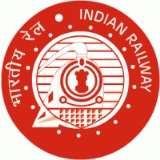
Indian Railways
Overview
Government-owned corporation
A government-owned corporation, state-owned company, state-owned entity, state enterprise, publicly owned corporation, government business enterprise, or parastatal is a legal entity created by a government to undertake commercial activities on behalf of an owner government...
of Government of India
Government of India
The Government of India, officially known as the Union Government, and also known as the Central Government, was established by the Constitution of India, and is the governing authority of the union of 28 states and seven union territories, collectively called the Republic of India...
, which owns and operates most of India
India
India , officially the Republic of India , is a country in South Asia. It is the seventh-largest country by geographical area, the second-most populous country with over 1.2 billion people, and the most populous democracy in the world...
's rail transport. It is overseen by the Ministry of Railways
Ministry of Railways (India)
The Ministry of Railways in India is in charge of the Indian Railways, an organisation that operates as a monopoly in rail transport in India. Dinesh Trivedi is the current minister responsible for railways....
of the Government of India
Government of India
The Government of India, officially known as the Union Government, and also known as the Central Government, was established by the Constitution of India, and is the governing authority of the union of 28 states and seven union territories, collectively called the Republic of India...
.
Indian Railways has 114500 kilometres (71,147 mi). of total track over a route of 65000 kilometres (40,389 mi)
and 7,500 stations. It has the world's fourth largest railway network after those of the United States
Rail transport in the United States
Presently, most rail transport in the United States is based on freight train shipments. The U.S. rail industry has experienced repeated convulsions due to changing U.S. economic needs and the rise of automobile, bus, and air transport....
, Russia
Russian Railways
The Russian Railways , is the government owned national rail carrier of the Russian Federation, headquartered in Moscow. The Russian Railways operate over of common carrier routes as well as a few hundred kilometers of industrial routes, making it the second largest network in the world exceeded...
and China
Rail transport in the People's Republic of China
Rail transport is the most commonly used mode of long-distance transportation in the People's Republic of China. Almost all rail operations are handled by the Ministry of Railways, which is part of the State Council of the People's Republic of China...
. The railways traverse the length and breadth of the country and carry over 30 million passengers and 2.8 million tons of freight
Cargo
Cargo is goods or produce transported, generally for commercial gain, by ship, aircraft, train, van or truck. In modern times, containers are used in most intermodal long-haul cargo transport.-Marine:...
daily.
It is the world's second largest commercial or utility employer, with more than 1.36 million employees As for rolling stock
Rolling stock
Rolling stock comprises all the vehicles that move on a railway. It usually includes both powered and unpowered vehicles, for example locomotives, railroad cars, coaches and wagons...
, IR owns over 240,000 (freight) wagons, 60,000 coaches and 9,000 locomotives.
Railways were first introduced to India in 1853.
Unanswered Questions
Quotations
"No one can safely say whether railways in this country will earn or not"![]()
Governor-General of India Lord Dalhousie

